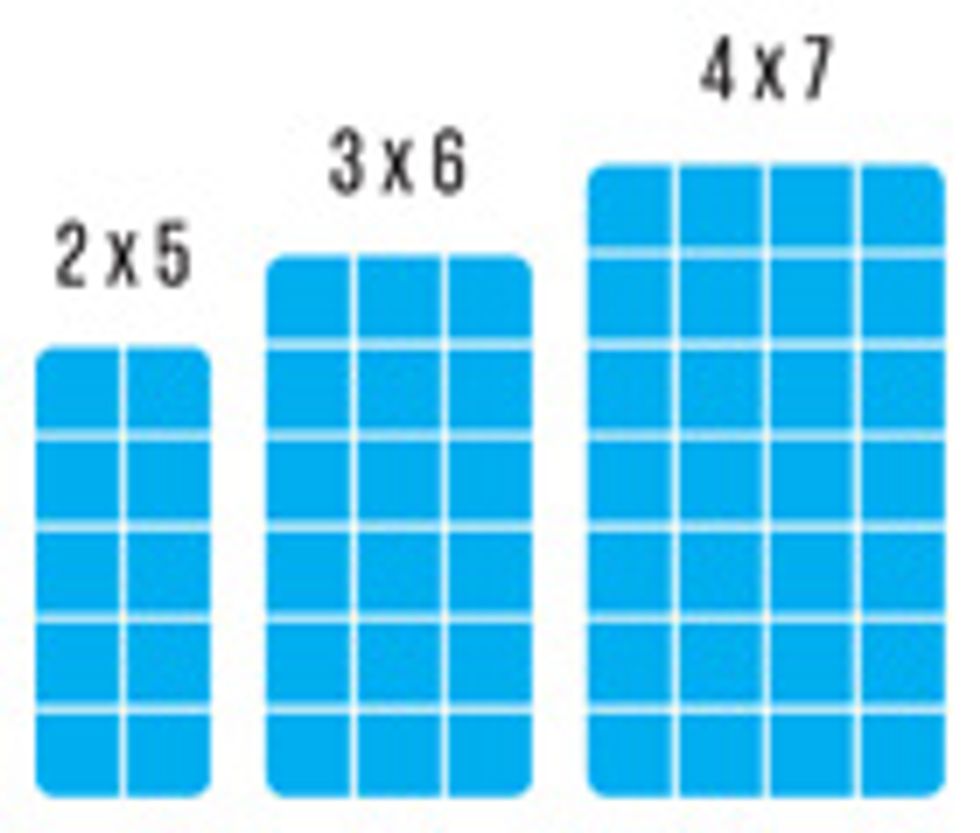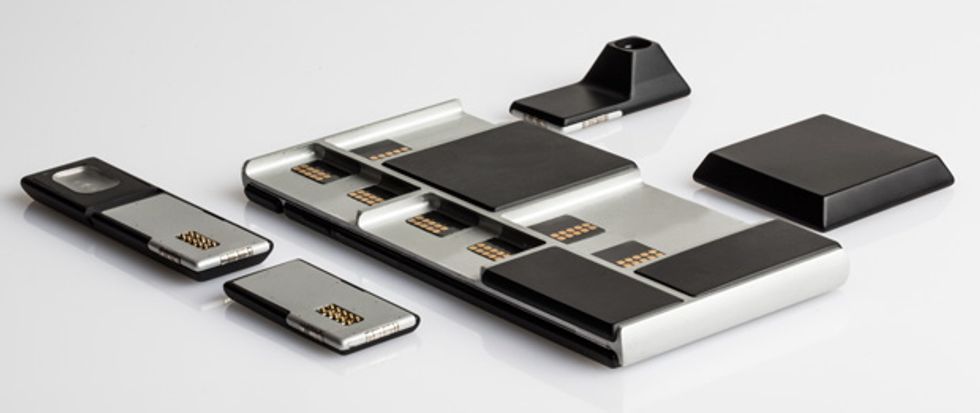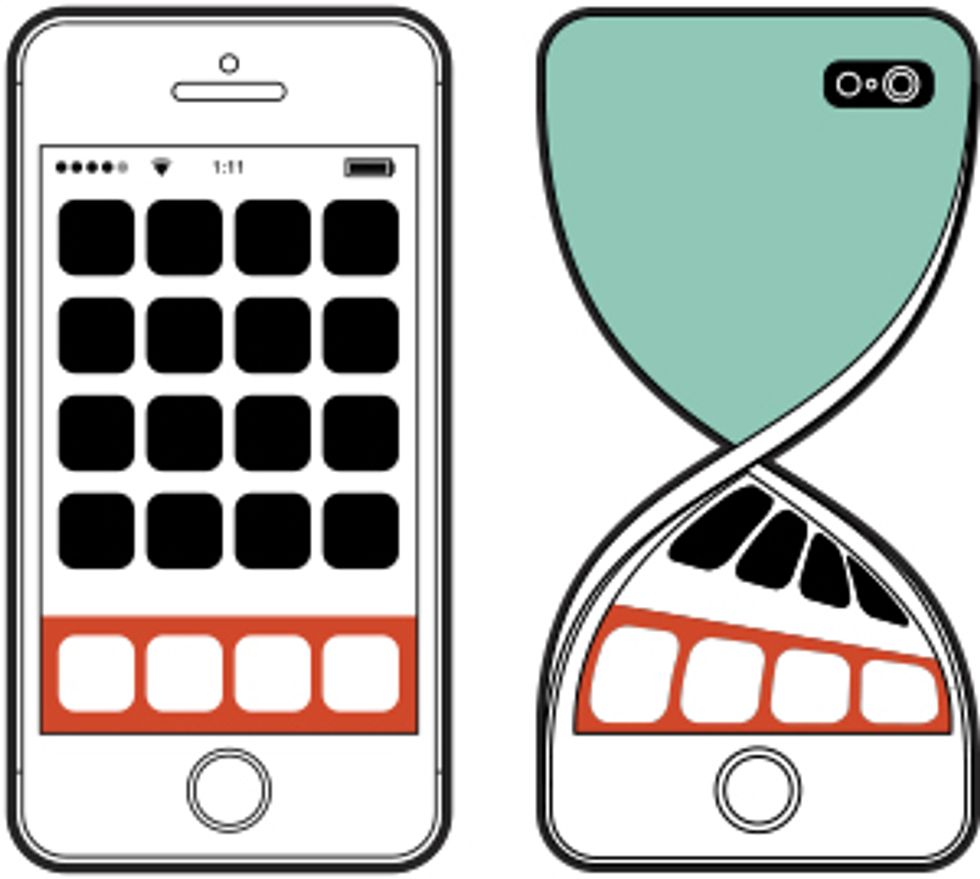Project Ara: Google Wants Your Phone to Go to Pieces
Google’s modular smartphone will let users swap parts like screens and cameras on the fly

The modern smartphone is a masterpiece of adaptability. It lets you talk, snap photos, and tote around sprawling media collections. Downloadable apps let you do lots of other things, too, like track your workouts, monitor your diet, or remix a song. There’s even an app that helps you find hidden treasure, thanks to software that turns your device into a metal detector using the magnetic-field sensors that make up your smartphone’s compass.
But don’t let this apparently awesome adaptability bamboozle you. For all its vaunted versatility, a smartphone is still only as good as its hardware. Though hundreds of new apps appear every day, your phone’s hardware is unchangeable beyond perhaps the option of swapping in a more spacious memory card.
This inflexibility has two drawbacks. First, your phone cannot take advantage of the steady improvements to hardware that accrue from Moore’s Law and other factors. Second, other than installing an app, you cannot modify your phone to fit your lifestyle or temporary needs.
Suppose you’re finally going on that long-dreamed-of vacation to Indonesia and want a better camera in your phone. Add-ons can give you a new lens to work with, and photo-editing software can improve the resulting pictures, but these tweaks won’t make a dramatic difference in your photos. If you really want to take better pictures with your phone, buying a new one is your only option.
Google hopes to change that this year when it releases the first iteration of Ara smartphones, which consumers will build and customize using hardware modules. At press time, Google hadn’t disclosed many details about its plans, including the exact release date or the modules that will be available when Ara debuts. But the company intends to begin sales of a “market pilot” version of the phone in 2015.
Google also announced that Chinese chip manufacturer Rockchip will provide the central processor for the device, which will be housed in a single, removable “application processor” module alongside the graphics processor and main flash drive. It was unclear as of mid-December whether the cellular antenna and radio components that allow Ara to serve as a phone will be contained within a single module or spread out over several. However, Project Ara director Paul Eremenko tells IEEE Spectrum that the phone will be capable of 4G LTE connectivity when it launches. Other basic offerings are expected to include display modules that serve as the screen, as well as battery, microphone, speaker, and camera modules.

To turn this hodgepodge into a functioning smartphone, you’ll plug everything into an “endoskeleton” that has built-in electronics to manage the flow of data and distribute power among modules. This supporting framework will also contain a tiny backup battery, which can keep the phone alive while you swap a dead battery module for a charged one. While Google will build the endoskeleton, the module design will be left to independent developers. Members of the design team expect that a basic Ara phone could be built from materials and components that cost between US $50 and $100. The retail cost of the phone could, of course, be more, depending on the specific modules the customer chooses.
The ultimate goal, Eremenko says, is a marketplace for hardware that rivals the vitality and diversity of offerings available now in app stores. Independent developers will create modules that are compatible with the phone’s endoskeleton, in much the same way developers write apps for the Android operating system. Google has offered some initial ideas for these modules, such as a thermal imager and a pulse oximeter, which lets users measure their pulse rates and blood oxygen levels. And independent developers are brainstorming designs for a slew of other modules, including radiation detectors and haptic-feedback devices to enable the blind to read braille on their smartphones.
Launching a wireless revolution isn’t easy, and it’s a task that not even a tech giant would take on alone. Google’s Advanced Technologies and Projects group, which oversees the company’s more far-out efforts, like the 3D-mapping Tango tablet, leads Project Ara. This small group is collaborating with companies including Toshiba and universities such as Carnegie Mellon. To build a version of Android that can operate a modular phone, Google has teamed with the nonprofit engineering consortium Linaro. This organization of engineers from around the world helps to develop open-source operating systems like Android and Ubuntu. The group also hosted the Linaro Connect USA conference in California where Eremenko laid out some of the details of Project Ara.Speaking at that conference, Eremenko said that the device would initially target people without smartphones. “There are 6 billion people who are not connected to the mobile Internet,” he told the audience. “Delivering the mobile Internet to those people could in fact be world changing.”
Does Google have the muscle to get a new kind of smartphone adopted by billions of new users? Alan DeRossett, cofounder of the firm VOXearch, which makes portable medical devices, is optimistic. One of the reasons is the burgeoning market for self-diagnostic gadgets. An Ara phone, he says, could host a suite of standardized modules that will diagnose a variety of diseases using an assortment of already available lab-on-a-chip technologies.
The beauty of the scheme, he says, is that building a device to detect diseases in the developing world wouldn’t mean abandoning other consumers who are interested in more mundane functions. “If you’re in California, you may need a fitness-monitoring module,” DeRossett notes. “In a developing country, the malaria monitor is going to be much more important to you.”

Customizing an Ara phone starts with its endoskeleton. It will come in three sizes, letting users decide whether they want a device that’s small, standard, or phablet size. The backbone of each model is laid out with a grid of slots, which can accommodate three different module shapes: small squares, large squares, and medium-size rectangles.
Every slot in the endoskeleton will have a pair of copper pins to convey power and four single-turn copper coils, each about 3 millimeters across. This layout is mirrored in each attached module, with a tenth of a millimeter between paired coils. Data is transferred across this small air gap by a technique known as inductive coupling—sending a current through one coil to induce a voltage in its partner. Because the coils don’t make physical contact, frequent swapping of modules won’t wear them down.
To manage the interchange of data between modules, Google chose an interface protocol called UniPro. Like USB, UniPro is a set of hardware and software standards that defines how devices communicate. Tech companies began developing UniPro almost a decade ago, under the auspices of the Mipi Alliance, which sets standards for mobile technology. Project Ara will be one of the first implementations of the protocol in the wild.
To make the most of its modular design, Ara will run a specialized version of the newly released Android 5.0 Lollipop operating system, which will allow for “hot swapping” of modules. With the exception of the screen and the application processor module, users will be able to remove a module and replace it with another without rebooting the phone. Want to use an Ara phone to share photos with friends? Remove the camera, plug in a pico-projector module, and start the show without ever powering down.
Battery life, which can make or break a smartphone, will be in the hands of Ara users. The device can be outfitted with more than one battery module at a time for greater capacity.
The Ara team had to come up with a connection system to ensure that modules stay firmly coupled to the phone while in use but are easy to detach when you want to swap them out. These engineers rejected mechanical latches, which would have detracted from the phone’s aesthetics and added more moving parts.
At the first Ara Developers Conference in April 2014, Google announced that it would use electropermanent magnets to connect the endoskeleton and modules. Modules will be held in place magnetically while in use. To remove one, you’ll use an app to send a brief surge of electric current through the magnets that hold it, altering their magnetization enough to free the module from the frame.
Project Ara could also change how we get rid of our smartphones. The modular design of the platform would make it easy for Ara users to swap, share, and resell components, extending their usefulness and keeping them out of landfills. A cracked screen on an Ara phone would be annoying, but it could be fixed easily by swapping in a single part. Team members estimate that the endoskeleton will have a life span of five years or more. That’s much longer than phones currently last in many parts of the world. According to the latest available data, phones get replaced every 22 months in the United States and every 27 months in South Korea.
The agnostic nature of Ara’s UniPro foundation means modules could have uses outside the endoskeleton. Imagine popping an MP3-player module out of your phone and inserting it into your car dashboard or home entertainment system. Toshiba has proposed an activity-monitoring module for Ara phones that could also operate in a wristband.
Although Ara is designed for everyone, any grand rethinking of the smartphone is bound to encounter some obstacles. For example, while some users will want to make their phones unique, others may find that level of customization daunting. And Google’s record on product launches is not spotless. “Google does many experiments,” says mobile-industry analyst Ken Dulaney. “Not all succeed.”
Eremenko admits that getting Project Ara off the ground will be a tricky proposition. When the phone launches later this year, the company will have to build a user base and a developer ecosystem simultaneously. Google thinks it can do that by building a market where niche products can thrive.
One developer, for example, is working on a battery with three times the energy density of standard smartphone batteries. It’s currently good for only 50 or so charging cycles, though. Ordinarily, Eremenko says, such innovators would be surviving on venture capital while they try to improve the technology. By turning to Ara, this company can sell a high-capacity battery with a limited life span—probably not a go-to power source, but one that some users might be interested in.
That’s the potential power of a modular phone: Because the pieces can be ordered à la carte, hardware doesn’t have to appeal to the masses to succeed. Instead, modules by independent developers and big companies alike can serve just a small community well. Eremenko and his team think there are many products like this looking for a home. With Project Ara, Google is aiming to bring them all into the fold.
Fast Forward
Not Your Father’s Smartphone
Future smartphones will get smaller and lighter—but not by that much

By 2020: Since Apple’s iPhone was introduced in 2007, smartphone design has meant a rectangular box with a glass touch screen. Sizes and specifications vary, but the core aesthetic remains to this day. With wearable devices like the Apple Watch and Google Glass hitting the market, could we be on the verge of big changes to the shape of smartphones? Not anytime soon, say industry analysts.
In the next five years, smartphone components will likely get more efficient and streamlined, but the shape of the finished product will remain largely the same.
One reason is that every phone needs a power supply, and batteries take up lots of space. While they will continue to get smaller, finding room for a good battery will remain a design constraint.
Another challenge will be finding enough real estate for a keyboard. Even the virtual ones demand physical space, and that limits how radically tech companies can rethink smartphone design. Voice controls are standard in new smartphones, but they’re not reliable or convenient enough to be the only means of input.
By 2025: A decade from now, things could be a lot different, though. By coating plastic sheets in a layer of light-emitting chemicals, manufacturers are already creating flexible screens that could eventually transform the smartphone. Current models like the LG G Flex and Samsung Galaxy Round have proved that curves and flexibility can be built into phones.
In the next decade, plastic could replace glass in most smartphone screens, opening the door to thinner, lighter devices with more durable displays. Analysts say that by 2025, plastic screens could mean phones that bend for better viewing angles or deform into different shapes. Because components like flexible keyboards and batteries already exist, such screens could mean the introduction of a phone that you could wrap around your wrist. —I.C.
This article originally appeared in print as “Your Phone Will Go to Pieces.”



